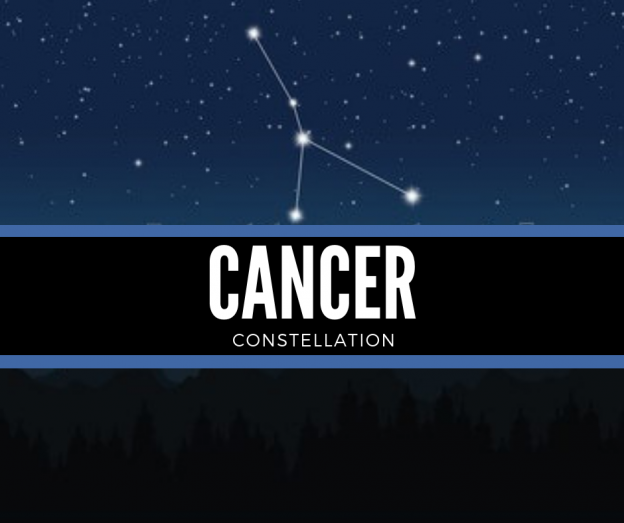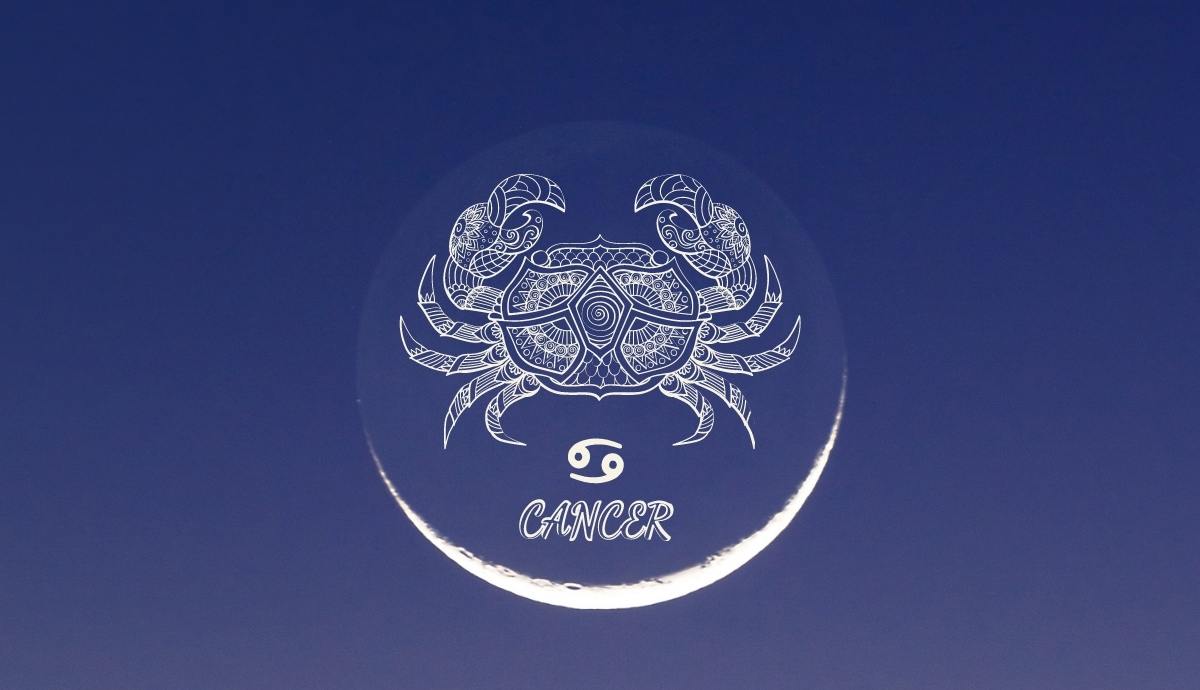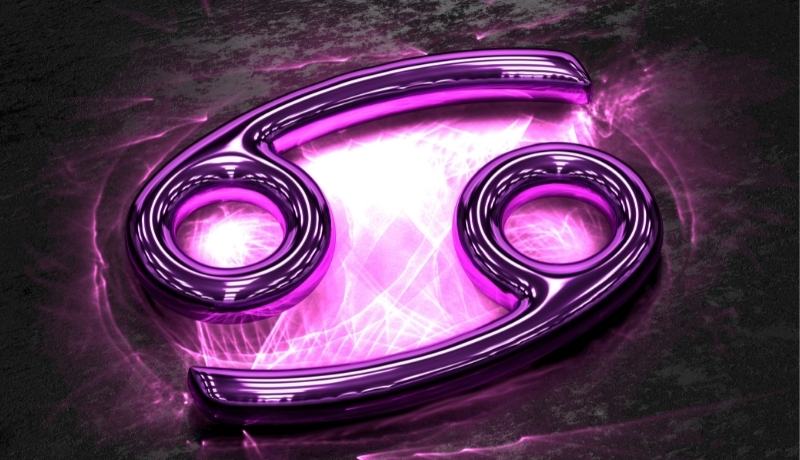The Cancer Constellation
The celestial sphere is far and wide, holding a plethora of striking secrets that go far beyond what the naked eye can perceive at first glance.
Constellations, those imaginary lines drawn between stars to create multiple shapes, are amongst those beautiful enigmas that require a certain level of dedication to visualize.
And few require as big an effort as Cancer.
Faint and unassuming, Cancer is the dimmest of all zodiacal constellations, hidden between the much brighter Gemini and Leo. This positioning makes Cancer almost impossible to locate for first-timers and amateurs.
However, the challenge is absolutely worth it—its inconspicuous nature hides a deep cosmic beauty and unparalleled levels of importance as a zodiacal constellation and sign.
About the Cancer Constellation
Cancer—meaning “crab” in Latin—is a northern sky constellation of high importance, for it is a member of the zodiac.
During Earth’s rotation movements, most objects in the solar system seem to pass through the sky, but not at random—the sun, the moon, and the planets cross the celestial sphere on a stable path named ecliptic. The ecliptic path goes through several constellations, meaning the sun and other objects pass through them once a year—including Cancer.
While the Cancer constellation is discernable through the globe on both hemispheres, its visibility is compromised while the sun crosses it, meaning it cannot be properly seen during July and August. On the other hand, the constellation is most observable during March.
However, gazing upon Cancer might be a complicated task even if done so during March—it has a faint nature and the lack of outstanding stars make it almost impossible to discern without some prior knowledge. Despite this, the constellation isn’t insignificant by any means—it’s only barely smaller than Gemini, as it ranks 31st in size and occupies a 1.23% of the celestial sphere.
Cancer is visible between latitudes +90° and -60°, in the middle of two fellow Zodiacal constellations—Gemini to the west and Leo to the east. Meanwhile, it borders Lynx to the north and Hydra and Canis Minor to the south.
As previously discussed, finding Cancer is difficult, but it can be done so by locating Castor and Pollux (Gemini) and Regulus (Leo). Between them, on a clear moonless night, Cancer should become visible, as long as it isn’t attempted on bright cities.
Major Stars in the Constellation of Cancer
Cancer was not blessed by bright stars within its borders, making it quite the lackluster constellation for star identification and admiration. Regardless, they remain important components of the night sky that deserve to be known and studied.
Praesepe.
Cancer’s most iconic object is not a star, but a cluster. Messier 44, most commonly known as Praesepe or the Beehive Cluster is a bright, big cluster that has the virtue of being easily seen on Earth, even without the aid of binoculars.
It is one of the nearest clusters, being around 520 light-years away from Earth. It contains at least a thousand stars, most red giants and white dwarfs. To the naked eye, they look like a cloud composed of stars, and they are located at the “chest” of the Crab.
Despite being easily seen, Praesepe isn’t particularly bright—admiring it requires being in the dark country during a moonless night.
Tarf.
Also known as Altarf or Beta Cancri, Tarf is the brightest star in the Cancer constellation. Despite being 50 times bigger than the sun, it is calculated to be at a distance of 290 light-years, thus explaining its subdued type of glow.
Boasting of an orange hue, Tarf is actually a binary system of stars, composed of a giant star is twice as bright as Taurus’ Aldebaran, and a fainter red dwarf companion. Its age is estimated to be over 2 billion years, making it a dying star.
In 2014 it was discovered that Tarf has a planet orbiting it, and it was designated Cancri B. According to most studies, this planet is over 8 times bigger than Jupiter, though not much more is known just yet.
Etymologically, its name means “end” in Arabic.
Asellus Australis.
The second brightest star in Cancer is Asellus Australis or Delta Cancri, actually a double star system composed of Delta Cancri A and B.
A giant, it is ten times bigger than the Sun and has twice its mass, not to mention it is 53 times brighter—sadly, its distance is rather impressive, being 180 light-years away from Earth.
Its name means “Southern Donkey Colt” in Latin.
Acubens.
The third brightest star in the Cancer constellation is Acubens—also designated as Alpha Cancri.
A multiple system, it is located over 170 light-years away from Earth and is composed of a white dwarf and a fainter companion, the former being three times bigger than the sun and 23 times brighter. Another binary system nearby orbits the first pair every 6,000 years.
Alpha Cancri’s popular name, Acubens, derives from the Arabic term for “claws”.
Cancer Constellation Facts
Fascinating deep sky objects, beautiful meteor showers and other mesmerizing cosmic beauties are hidden behind the dim stars of the celestial crab. These and many other enthralling facts turn Cancer into one of the must-know constellations in the sky.
- Cancer has one meteor shower associated with it—the Delta Cancrids. It starts in December and continues throughout February, reaching their peak during early January. It only displays around four meteors per hour, but they are a beautiful spectacle to witness in the dark country.
- Praesepe is not the only star cluster within Cancer—King Cobra Cluster, or Messier 67, is an open cluster that is smaller and denser than its apparent neighbor. It’s composed by over 500 stars, and 100 of them have a structure very similar to the Sun.
- One of Cancer’s stars hosts a planet named Janssen, or 55 Cancri e. This super-Earth planet was nicknamed the “diamond planet”—the pressure on its carbon structure might lead to the formation of massive diamonds.
- As Cancer is a zodiacal constellation, the sun, moon and planets go through it once a year. The sun, particularly, visits Cancer from July 21 to August 11.
- Cancer is considered one of the twelve zodiac signs—constellations said to guide human actions and characteristics. A person has Cancer as their sun sign if they are born between June 21 and July 22.
Cancer Constellation Mythology and History
The ancient Greeks conceived the constellation as a crab, but not any of them. For them, the constellation in the sky represented the monstrous Karkinos.
During one of Hercules’ twelve labors, he faced the sea monster Hydra in combat. Hera, a revengeful goddess who wished Hercules to fail, sent the crab Karkinos to distract the hero in combat and allow the Hydra to defeat him.
Against Hera’s calculations, there was little that Karkinos could do, as Hercules defeated him right away—some sources claim Hercules kicked him away with such strength he sent the crab to the heavens, while others claim he crushed him under his feet and Hera, grateful for the monster’s loyal service, placed him in the sky herself.
The Cancer constellation is amongst the 48 constellations recognized by the ancient astronomer Ptolemy and eventually became one of the 88 officially accepted by the International Astronomical Union.
In astrology, Cancer is the fourth zodiac sign. Ruled by the Moon, this sign has a cardinal quality and a water element. Those born under it are highly emotional, empathetic, loyal, manipulative, insecure and moody.
This subdued constellation has remained important through humanity’s history—beautiful, gleaming proof that shining the brightest is not a requisite to matter.
SEE MORE: Zodiac Constellations
RELATED:
- Gemini-Cancer Cusp: The Cusp of Magic (June 18 – June 24)
- Are Cancer and Gemini A Good Match?
- Cancer Daily Horoscope
- CANCER AND TAURUS LOVE MATCH
SOURCES
Cancer Constellation: Facts About the Crab by Kim Ann Zimmermann at Space.com
Cancer? Here’s your constellation by Bruce McClure at EarthSky.
Cancer Zodiac Profile at Horoscope.com.
Star Facts: Al Tarf by Peter Christoforou at Astronomy Trek.
Super-Earth Planet Likely Made of Diamonds by Clara Moskowitz at Space.com.
The Beehive: 1,000 stars in Cancer by Brucer McClure and Deborah Byrd at EarthSky.
The Cancer Constellation by Tammy Plotner at Universe Today.
- ISFJ and ISTJ in love: 5 Essential Dynamics of their Relationship - February 24, 2024
- ENTP and ENTJ in love: 6 Critical Dynamics of Their Relationship. - February 18, 2024
- ESTJ and ESFJ in love: 4 Key Aspects of their Relationship. - February 12, 2024





